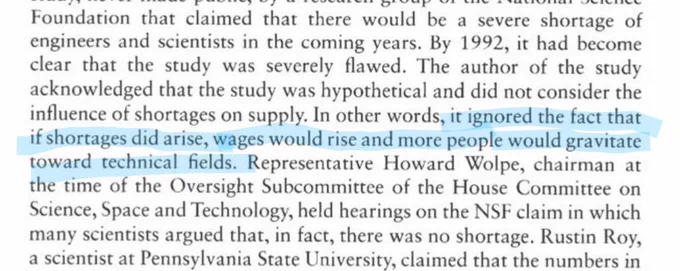There was never a STEM shortage in America.
In 1987, Peter House wrote a paper that was never published or peer reviewed that "projected" a shortage of 675k STEM graduated over the next 20 years.
His method?
"House drew an imaginary line from the record high level of science degrees awarded in 1984-86 (the peak of baby boomers graduating) and calculated the difference between that level" and his projected level, based purely on assumptions about the number of college students and the percentage who would pursue STEM degrees.
House's methods were highly criticized by mathematicians and economists as politicized "pseudoscience".
The paper was widely circulated within Washington for two purposes:
1. NSF lobbied for additional funding
2. ITAA lobbied for the creation of H-1B visas
All these years later, the original paper is still not publicly available.
When Rep Howard Wolpe (D, Mich) held hearings about the topic, congressional subpoenas revealed members of NSF corresponding with colleagues in academia and industry who were concerned about rising STEM salaries.
That was the reason they chose to create buzz about a STEM "shortage", to justify a labor subsidy via changes to immigration law.
@amandalouise416
@EricRWeinstein
@chamath










































